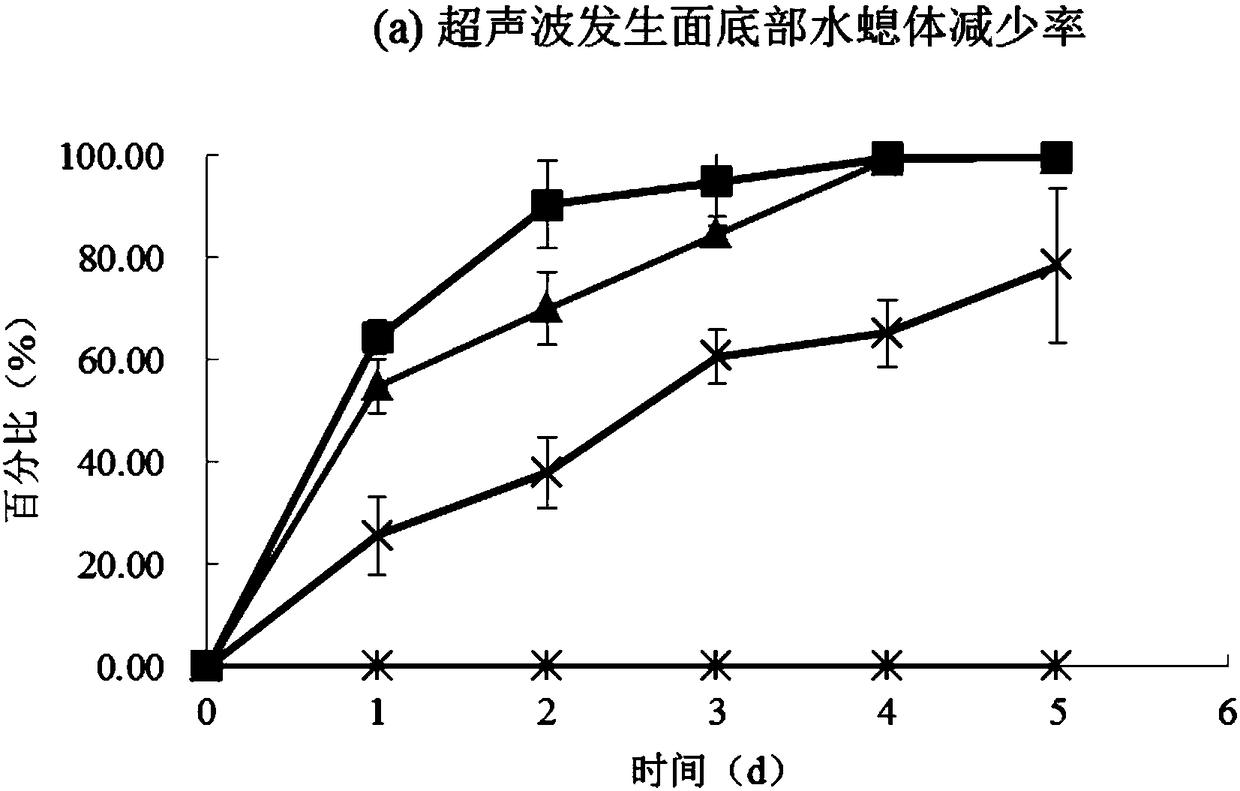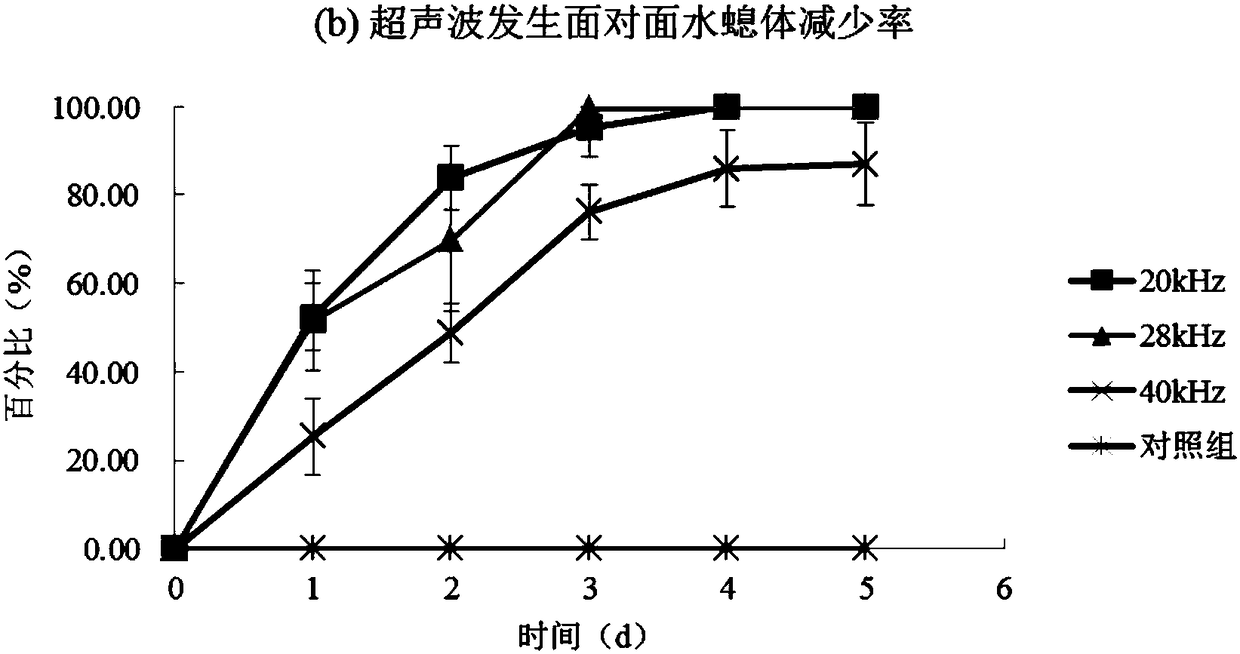Method and device for removing jellyfishes in seawater through ultrasonic
An ultrasonic wave and jellyfish technology, applied in animal husbandry and other fields, can solve the problems of production and living loss, achieve the effect of no secondary pollution, wide application prospects, and prevention of jellyfish outbreaks
- Summary
- Abstract
- Description
- Claims
- Application Information
AI Technical Summary
Problems solved by technology
Method used
Image
Examples
Embodiment 1
[0025] Depend on figure 1 As shown, the device includes a treatment device, a corrugated plate with a polyp attached, an ultrasonic vibrating plate and an ultrasonic device; the processing device is inserted with at least one corrugated plate with a polyp attached and an ultrasonic vibrating plate, and the ultrasonic vibrating plate communicates with the ultrasonic device through a wire connect.
[0026] The corrugated plate attached to the polyp body is detachably arranged on the opposite side and the bottom of the ultrasonic vibrating plate; wherein, the dish-shaped body or jellyfish body lives for swimming, and the dish-shaped body or jellyfish body to be treated is placed in the reactor, which can float processed in the reactor.
Embodiment 2
[0028] (1) Get 4 groups of corrugated plates attached to the hydra of the sea jellyfish, and each group has 3 repetitions. Set up the control group (do not accept ultrasonic treatment), the 20KHZ frequency treatment group, the 28KHZ frequency treatment group, and the 40KHZ frequency treatment group. body is processed. When processing, the corrugated plate is placed on the opposite side and bottom of the ultrasonic vibrating plate ( figure 1 ), processed once a day, each processing time is 20min. After the treatment, the corrugated plate attached with the polyps of the jellyfish was disassembled and put back into the original incubator to continue culturing. During the treatment period, feed normally and change water. Respectively record the reduction rate (see Fig. 2) of polyps on the corrugated plate that is attached to the jellyfish polyp body after each treatment; Reduction rate=(initial polyp body density a 0 - polyp density a per day after treatment n ) / initial polyp ...
Embodiment 3
[0037] (1) Get 4 groups of corrugated plates attached to the polyps of the jellyfish, each group has 3 repetitions, and in each repetition, the corrugated plates are placed on the opposite side and bottom of the ultrasonic vibrating plate ( figure 1 ). Ultrasonic treatment with 28KHZ frequency, the treatment time is 0min (control group), 20min, 40min, 60min respectively, once a day, during the treatment period, normal feeding and water change. Record the polyp density a of each group of corrugated plates after n days of treatment n , and calculate the reduction rate of the polyp (see Figure 5); reduction rate=(initial polyp density a 0 - polyp density a per day after treatment n ) / initial polyp density a 0 , n is the number of treatment days.
[0038] (2) Take 4 groups of moon jellyfish disks with similar size and good condition, each set up 3 replicates, each replicate 100 disks, and place them in 12 treatment reactors of appropriate size for culture ( figure 1 ). Ultra...
PUM
 Login to View More
Login to View More Abstract
Description
Claims
Application Information
 Login to View More
Login to View More - R&D Engineer
- R&D Manager
- IP Professional
- Industry Leading Data Capabilities
- Powerful AI technology
- Patent DNA Extraction
Browse by: Latest US Patents, China's latest patents, Technical Efficacy Thesaurus, Application Domain, Technology Topic, Popular Technical Reports.
© 2024 PatSnap. All rights reserved.Legal|Privacy policy|Modern Slavery Act Transparency Statement|Sitemap|About US| Contact US: help@patsnap.com










